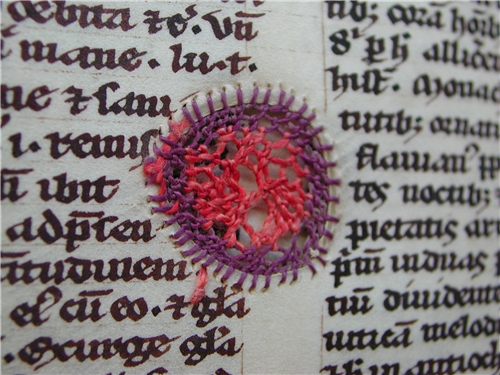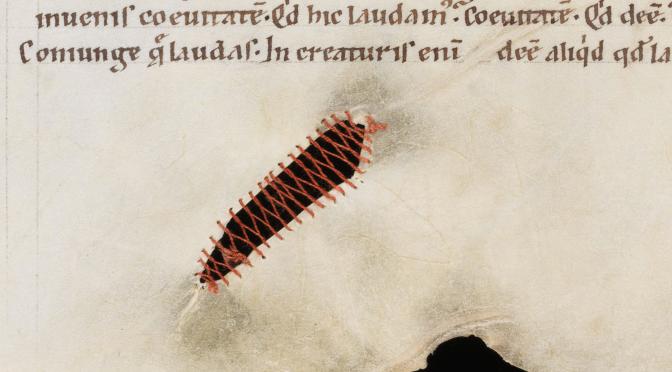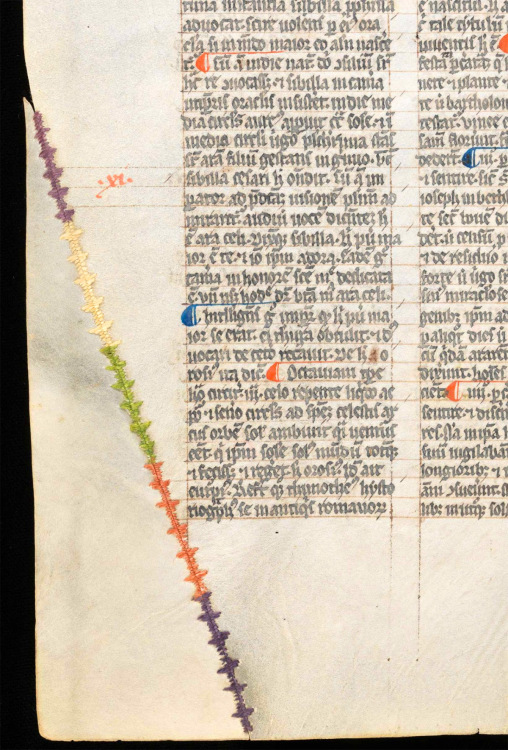Medieval Book Historian Erik Kwakkel Documents the Curious Methods Scribes Used to Repair Parchment

photo via medievalbooks
From the fifth through 13th centuries, parchment, made from animal skin, was used for pages of books. Parchment was strong, but the quality of it varied based on thickness, uniformity of color, and evenness of each page. While pages of books made with very high-quality parchment remain intact fairly well, poor-quality parchment had a tendency to split and rip. Parchment was expensive, so these holes and tears were often repaired by scribes. Leiden University medieval book historian Erik Kwakkel (previously) has documented some of the creative methods scribes used to make repairs or even incorporate holes in parchment into art.
Preparing parchment was a delicate business. In order to clear the skin of flesh and hair, it was attached to a wooden frame, tight like a drum. If the round knife of the parchment maker (the lunellum) cut too deep during this scraping process, elongated rips or holes would appear. As a result the reader is given an unexpected sneak peek onto the next page – where a dragon may just be introduced into the story. We encounter such holes frequently in medieval books, which suggests that readers were not too bothered by them. Many scribes will have shared this sentiment, because they usually simply wrote around a hole. Some placed a little line around them, as if to prevent the reader from falling in.
Kwakkel made a short video with Khan Academy in which he examines how the quality of parchment affects the sound it makes when pages are turned.

photo via Erik Kwakkel

photo via medievalbooks

photo via medievalbooks

photo via medievalbooks
via Colossal






